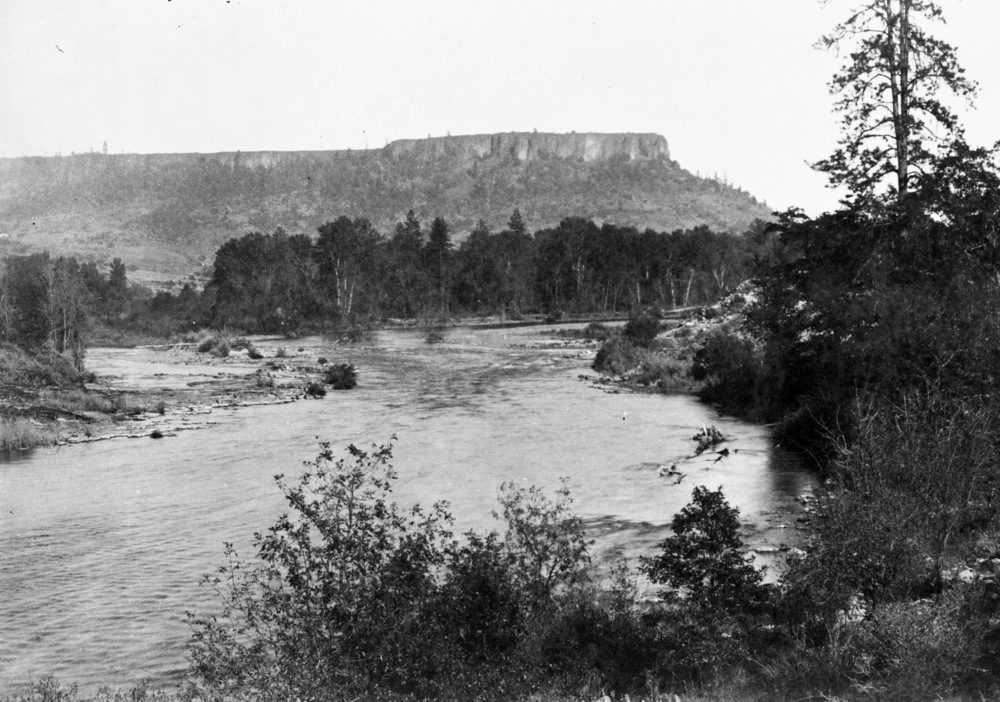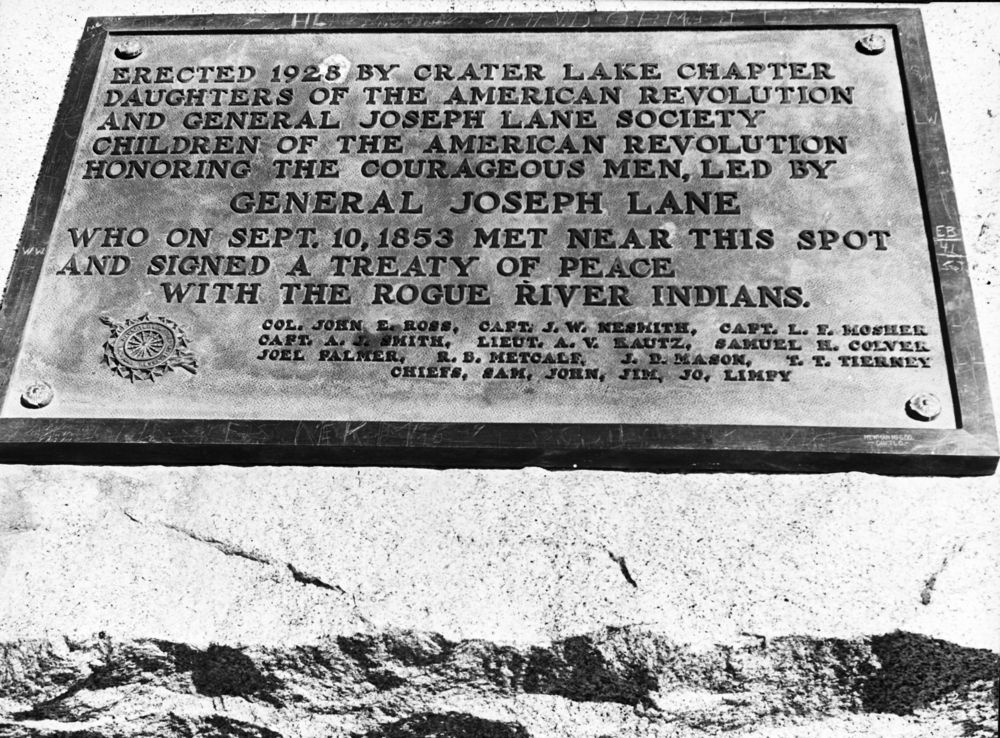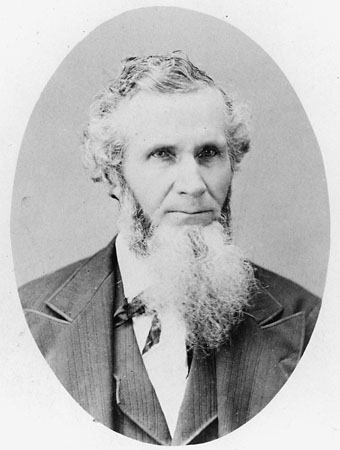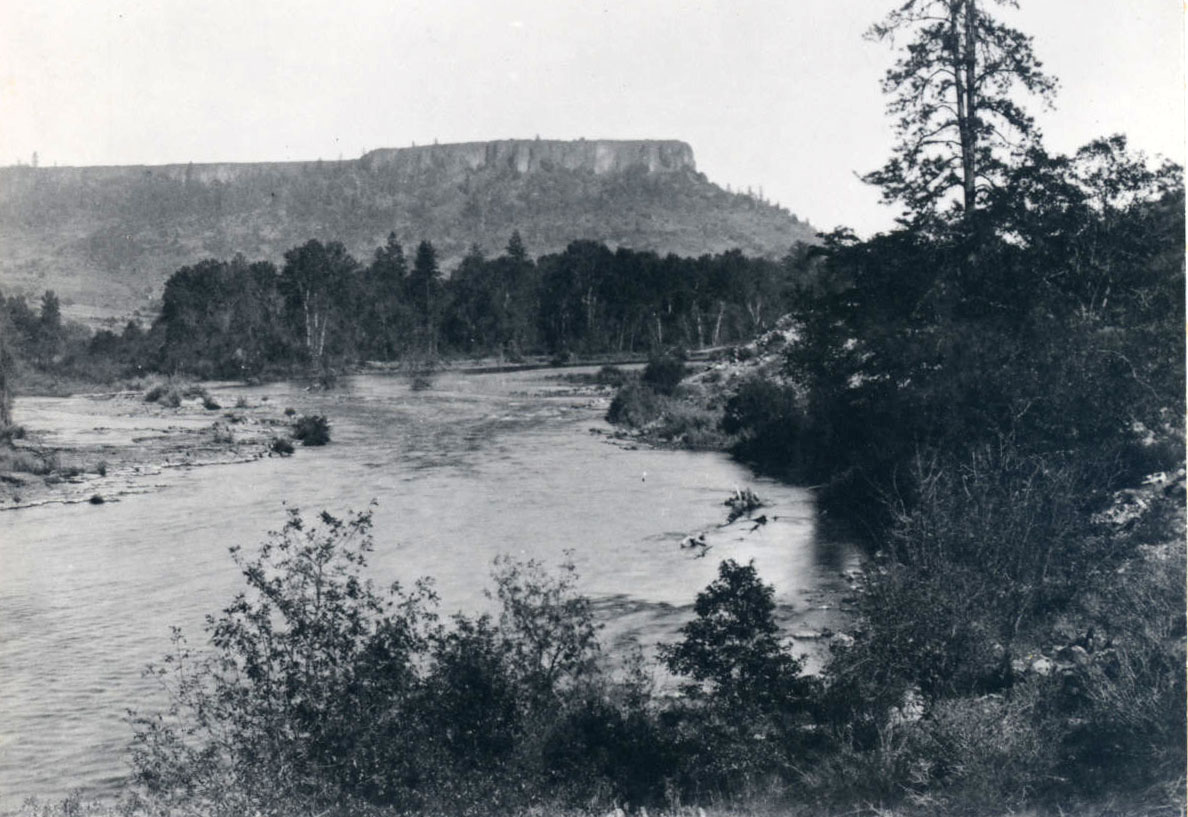The 1853 Council of Table Rock negotiated a peace treaty between representatives of the United States government and the Takelma, Shasta, and Dakubetede of the Rogue Valley, bringing a temporary respite to the conflict in southwestern Oregon between Native people and the -growing number of white settlers and miners.
On September 10, 1853, near Lower Table Rock, overlooking the north bank of the Rogue River, across the river from the mouth of Bear Creek, Takelma leader Apserkahar (known as Chief Joe) and former Oregon Territorial Governor Joseph Lane faced each other. Lane's fellow negotiators included U.S. Army Captain A. J. Smith, Oregon Superintendant of Indian Affairs Joel Palmer, local militia Colonel John Ross, Lafayette Grover (later governor of the state), and James Nesmith as translator (later a U.S. senator). The group entered the Takelma camp unarmed, and the parlaying lasted for much of the day. Nesmith later said that the party came close to being ‘killed to a man" when news of the latest murder of an innocent Native angered the Takelma leaders.
The Treaty of Table Rock, which was ratified by the U.S. Congress as a stop-gap measure, established a temporary reservation on the north side of the Rogue River, including the two Table Rocks, Sam's Valley, and the Sardine Creek and Evans Creek watersheds. The treaty also promised various goods and services that would enable the Indians to farm and ranch and agreed that Fort Lane (established in 1853) would protect the reservation's inhabitants from land-hungry whites.
In October 1855, the so-called Lupton Massacre, perpetrated by a group of self-described Exterminators—white settlers and miners from Jacksonville—on Takelmas camped near Upper Table Rock, ended the peace and precipitated the final Rogue River War. The Takelma, who unlike the other Native groups gathered onto the reserve remained peacefully on the reservation throughout the 1855-1856 episode, were removed from their Rogue Valley home to the newly established reservation west of Salem. Fort Lane was abandoned, and the former Table Rock Reservation was opened to settlement.
-
![]()
Table Rock rises above the Rogue River in Jackson County, 1887.
Photo by W. W. Bretherton, courtesy Oreg. Hist. Soc. Research Lib., bb006120
-
![Plaque commemorating treaty signing near Fort Lane, present day Camp White, Jackson County.]()
Rogue River Treaty plaque, August 1942.
Plaque commemorating treaty signing near Fort Lane, present day Camp White, Jackson County. Oreg. Hist. Soc. Research Lib., bb004075
Related Entries
-
![Fort Lane]()
Fort Lane
Fort Lane was a United States military fort constructed following the s…
-
![Joel Palmer (1810-1881)]()
Joel Palmer (1810-1881)
Joel Palmer, who first saw the Oregon Country from a wagon in 1845, spe…
-
![Rogue River War of 1855-1856]()
Rogue River War of 1855-1856
The final Rogue River War began early on the morning of October 8, 1855…
-
![Table Rocks]()
Table Rocks
The Table Rocks, two large mesas north of Medford, rise nearly 800 feet…
Related Historical Records
Map This on the Oregon History WayFinder
The Oregon History Wayfinder is an interactive map that identifies significant places, people, and events in Oregon history.
Further Reading
Beckham, Stephen Dow. Requiem for a People: The Rogue River Indians and the Frontiersmen. Norman: University of Oklahoma Press, 1971.
Nathan Douthit. "Joseph Lane and the Rogue River Indians: Personal Relations Across a Cultural Divide." Oregon Historical Quarterly, 95, no. 4, Winter 1994-95.
Schwartz, E. A. The Rogue River Indian War and Its Aftermath, 1850-1980. Norman: University of Oklahoma Press, 1997.









